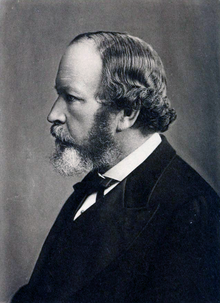Author:William Blades
Appearance
Works
[edit]- The Governayle of Helthe, reprinted from Caxton's edition (1858)
- Moral Prouerbes; C. du Castel (1859)
- The Life and Typography of W. Caxton, England's First Printer, with Evidence of his Typographical Connection with Colard Mansion the Printer at Bruges (1861-3), in 2 vols.
- A catalogue of books printed by (or ascribed to the press of) William Caxton, in which is included the pressmark of every copy contained in the library of the British Museum (1865)
- A List of Medals struck by order of the Corporation of London (1870)
- How to tell a Caxton, with some hints where and how the same might be found (1870)
- Typographical Notes (1870)
- Shakespere and Typography, being an attempt to show Shakespere's perscyial connection with and technical knowledge of the art of printing (1872)
- Some Early Type-specimen Books of England, Holland, France, Italy, and Germany (1875)
- Earl of Rivers: the Dictes and Sayings of the Philosophers; a facsimile reproduction of the first book printed in England (1877)
- The Boke of Saint Albans, by Dame Juliana Berners; a facsimile (1881)
- The Enemies of Books (1881)
- Numismata Typographica; or the Medallic History of Printing, being an account of the medals, jettons, and tokens struck in commemoration of printers and the art of printing (1883)
- An Account of the German Morality Play entitled "Depositio Comuti Typographici," as performed in the 17th and ISth Centuries (1885)
- Bibliographical Miscellanies: No. 1, Signatures; No. 2, the Chained Library at Wimborne Minster; Nos. 3, 4, and 5, Books in Chains (1890)
- The Pentateuch of Printing (1891), edited by T. B. Reed
Works about Blades
[edit]- "Blades, William," in Encyclopædia Britannica (11th ed., 1911)
- "Blades, William," in Dictionary of National Biography, 1901 supplement, London: Smith, Elder, & Co. (1901) in 3 vols.
- "Blades, William," in Men of the Time (eleventh edition), by Thompson Cooper, London: George Routledge and Sons (1884)
![]()
Some or all works by this author were published before January 1, 1930, and are in the public domain worldwide because the author died at least 100 years ago. Translations or editions published later may be copyrighted. Posthumous works may be copyrighted based on how long they have been published in certain countries and areas.
Public domainPublic domainfalsefalse

